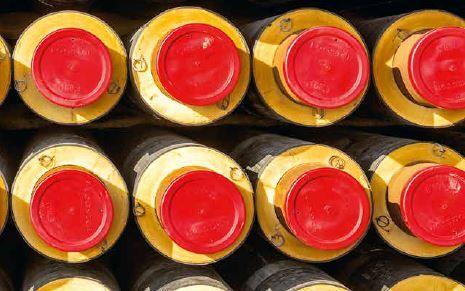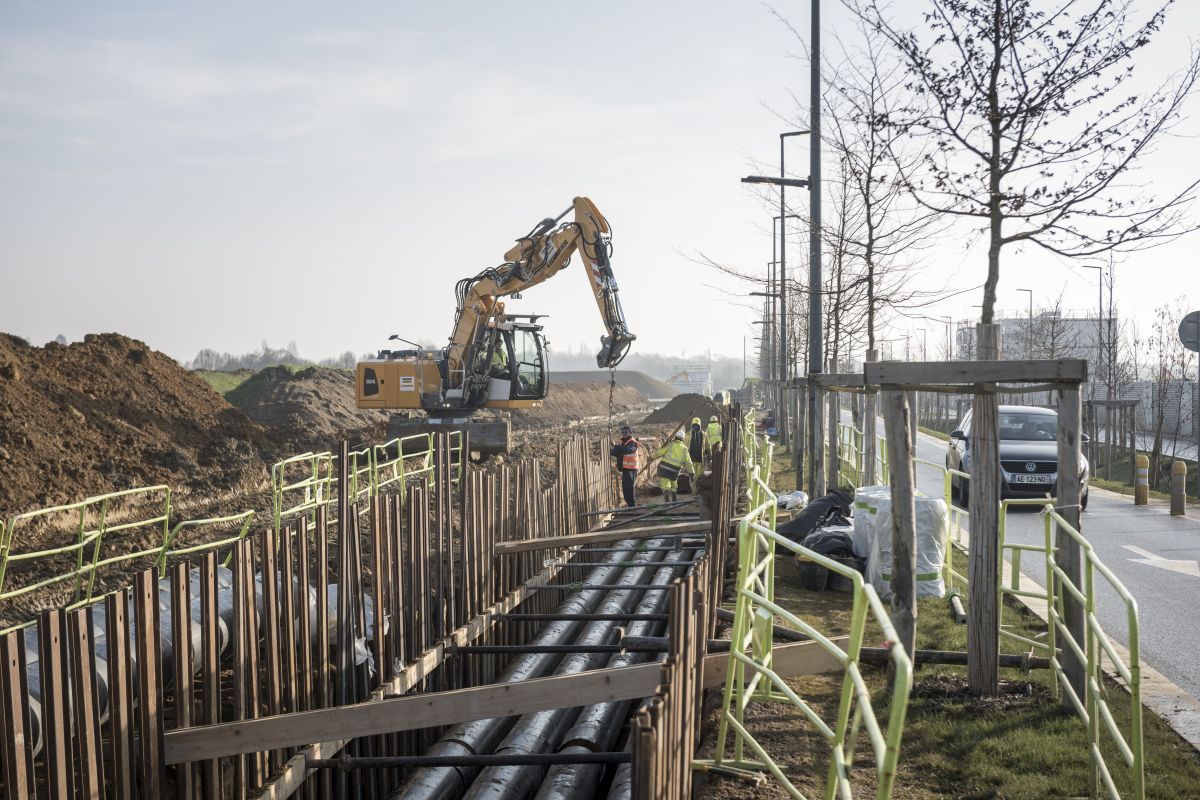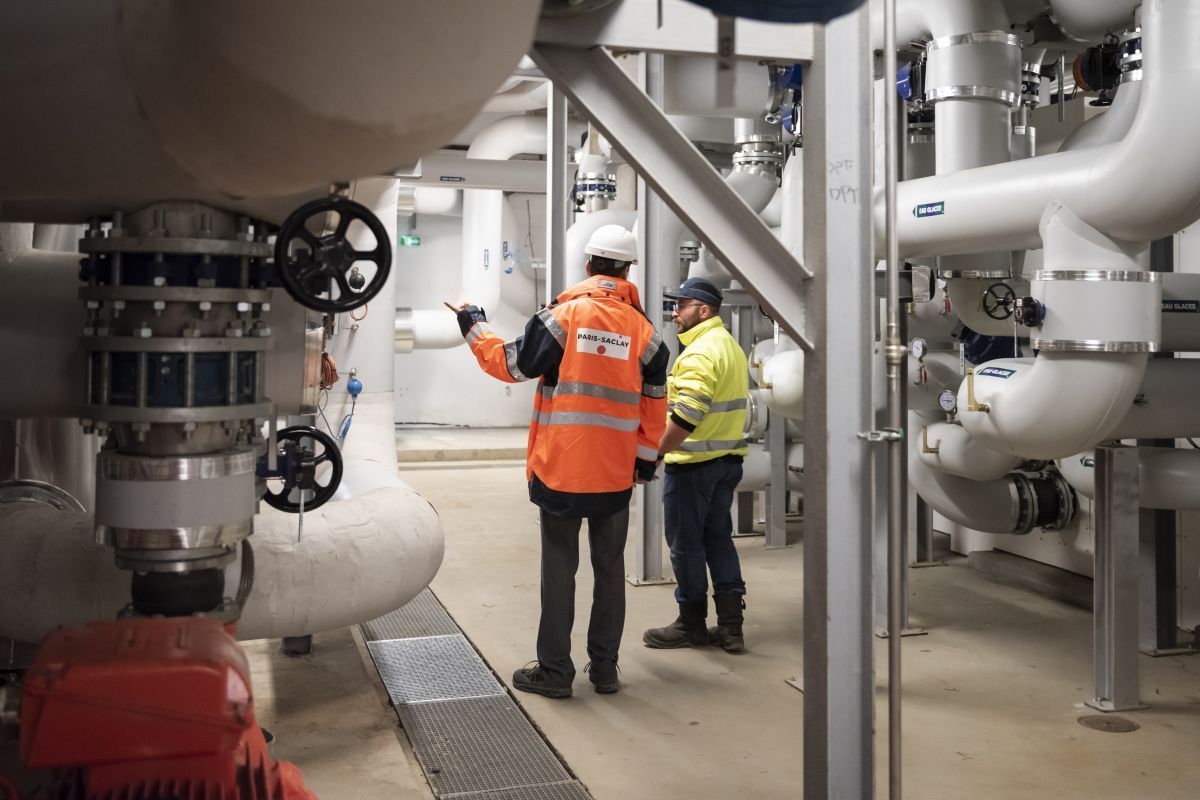Recovering, upcycling and exchanging energy: making the energy transition with heating and cooling networks a success
D2Grids Project

As a major component of the Paris-Saclay energy strategy, the heating and cooling network of the Urban Campus is an ambitious project mobilizing local renewable energies and integrated into a vast intelligent multi-energy network. Since 2019, the infrastructure has been selected as a European demonstrator of 5th generation networks as part of the European D2Grids project. An interview with Nicolas Eyraud, Project Director for the "heating and cooling network" project at the Innovation Strategy Department, EPA Paris-Saclay.
What makes this heating and cooling network different?
NE-The heating and cooling network of the Urban Campus participates in the Smart Energy Paris-Saclay multi-energy network. On this scale, this is a world first that will be carried out in conjunction with industrialists but also through research partnerships with institutions present in the area.
What makes it innovative?
NE-The fact that this network connects buildings that are themselves extremely efficient and that it offers prospects for virtuous energy management and scientific cooperation makes it one of the main technological demonstrators in France.
Since when has the Albian water table been an energy resource?
NE-This water table has been used on several times, notably by a borehole in Orsay dug a century ago, and much more recently to supply heating networks in Issy-les-Moulineaux and on the Clichy-Batignolles Joint Development Zone for example. The exploitable underground surface of this water table occupies a large part of the western half of the Île-de-France region.

Borehole heat network 2, Moulon, © Carlos Ayesta
How is it related to the development of the Saclay Plateau and since when?
NE-As of 2012, EPA teams have been considering how best to supply energy to the future buildings in the Moulon and École Polytechnique districts. The question that arose at the time was whether or not it was preferable to design a federating system. After a period of study, the choice was made for a more efficient and less expensive shared equipment that would irrigate these two districts. Very quickly, the Albian water table appeared as the first viable solution since it could cover 42% of the heat needs. But there are others, such as biomass (recovery of agricultural or forestry residues by burning them or transforming them into green gas), or the recovery of fatal heat emitted by certain buildings with very specific processes such as the SOLEIL Synchrotron, the particle accelerator, or IDRIS, the CNRS's major centre for very high performance intensive digital computing, which hosts supercomputers.
How long has this heating network been in operation?
NE-S Its commissioning has been gradual. Work on network installation began in 2016, when the first buildings were connected and heated, such as the ENSAE student housing, an inter-company restaurant in the École polytechnique district. At the end of 2016, we continued the mission by commissioning the network in the new CentraleSupélec buildings and student housing.
Will all the buildings to be built on the Urban Campus be systematically connected to this heating network?
NE- As a planner, we require all future real estate projects to be connected to the network: schools, housing, offices or public facilities such as gymnasiums, the Moulon swimming pool and the hospital in Corbeville. Paris-Saclay's heating and cooling network provides heating, domestic hot water and 7°C chilled water, which will be used in particular to cool certain laboratories or server rooms that need to be cooled all year round.
So the logic is that of an exchange network, concretely how will it work?
NE-The whole of the thermal installations, heat pumps, exchange substations, will be managed in a coordinated way to optimise the distribution of energy according to the different uses and characteristics of the buildings but also the cost of energy and its carbon intensity. For example, the heating of tertiary and education buildings, which are little occupied or empty from 6 p.m. onwards, could be put on standby at a time when housing needs are increasing.
Do we already have an idea of the benefits that this heating network can generate?
NE-The renewable energy coverage rate of the energy produced will reach 62%. Carbon dioxide emissions will be considerably reduced with a content of less than 100g of C92 per kWh; this is half as much as gas. The benefits are therefore not only environmental but also economic with energy at a competitive price in the short term and stable over the long term. They will also be industrial because nothing is lost! Until now, heat released by cold production or by certain industrial or research processes was rejected. The Paris-Saclay network collects, valorizes and exchanges all these energies. Finally, in terms of heritage, the infrastructures are designed to have a very long lifespan. The main idea is to build a smart city, meaning neighbourhoods without waste and where everything is a resource.

Centralized heating and cooling network installations, © Carlos Ayesta
Are there other energies you will use?
NE- Since it is difficult to size renewable energy installations able to respond to high consumption that takes place a few days a year, gas-fired boilers are planned as a complement. They will provide auxiliary energy during peak consumption periods. As for electricity, it covers a third of the needs and is used to power the heat pumps. We are also planning to store energy, for example by means of a large basin in which hot water would be stored all year round. The main idea is to constantly optimise the exchange between production and consumption, depending on the time of day and the season.
What is the role of the temperate loop?
NE-The tempered loop is the backbone of the heating network. This circulation system will pump water at 30°C into the Albian water table, whose heat then enters the tempered loop. There is no loss in water volume, only heat is extracted.
This tempered loop will supply island substations where the heat pumps are located, which, by transferring calories, produce hot water at 60°C and iced water at 7°C. The loop requires two networks - hot and cold - in order to supply each of the buildings.
Will the buildings have their own autonomy?
NE-Each building will be autonomous, because the heating network stops at the foot of the building. The management of the heating itself will belong to the building which will entrust it to an operator, it is exactly the same principle as for the gas supply. In apartment buildings, the distribution of the energy billing will be established by the building manager according to the consumption of each user via an individual meter.
If this Albien water table had not existed, what would you have done?
NE-We would have favoured other renewable energy sources or thought about another energy system, because the architecture of our heating network was tailor-made to adapt to the local context, both in terms of needs related to the uses of the Urban Campus and the resources available.
Article originally published in French
Link to original source (PDF)



